offer the potato as the fruit from the top of the world,
people who fled the mountains for a crop at lower depths,
descending to cut the potato and find
the white meat, fiber tasting like the grain
that gave them speech.
Their vowels make me wish
Last week's introduction to the wonders of Peruvian food was the most popular episode of Ethnic Eating 101 to date, moreso even than the Ethiopian food novel. It's not really a surprise: the food is commonly found, accessible to Americans with tenuous grasps of Spanish and cheap.
I mentioned the lime-marinated red onions that are ubiquitous in Peruvian cuisine, but in my hurry I forgot to give their proper name: they are called sarza criolla and they appear on everything from ceviche to causa rellena to fried seafood platters.
This week we're going to cover Peruvian-Chinese cooking and a whole host of stick-to-your-ribs stews that form the backbone of the Peruvian diet.

]
Chifa
As we discussed last week, there is a very large Asian presence in Peru, particularly in the cities, so much so that Chinese food (adapted to Peruvian tastes) has become one of the de facto foods of the country, much like Indian food in England. Soy sauce sells hugely in Lima, and all manner of stir-fried dishes grace the Peruvian diet.
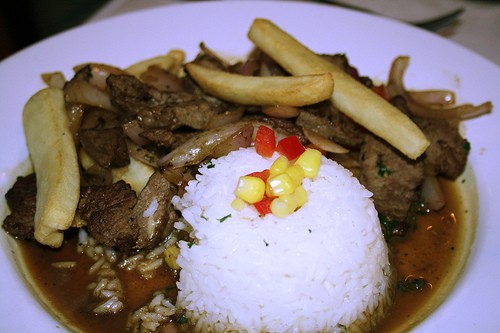
Saltado is the Spanish word for “stir-fried”. Any protein can be saltado; it just means it's sautéed in a wok with onions, tomatoes, soy sauce and French fries. The food is then served next to rice. Lomo saltado is the American-friendliest food in the Peruvian repertoire; it's fingers of beef steak with the saltado treatment. Also available are pollo saltado (chicken) and mariscos saltados (seafood).
Arroz chaufa looks odd to bilingual (er, trilingual) eyes, because it translates as “rice fried rice”, with the chaufa from the Chinese for “fried rice”. This is exactly what it seems like, fried rice with your choice of meat or seafood, and usually cabbage and other vegetables.
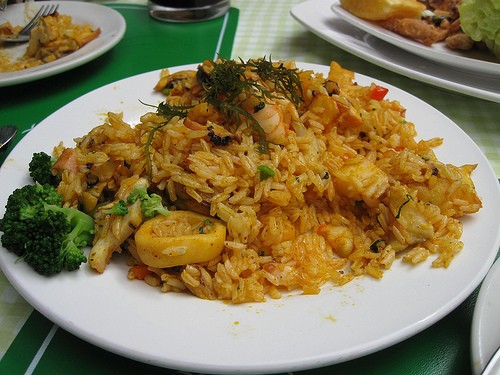
Tallarines are noodles, tossed lo mein-style with meats, vegetables and spices. If you see tallarines verdes, the noodles themselves are not necessarily green; they'll be tossed with a pesto-like spinach or herb sauce which turns them green.
Is there another vegetable with so many different names in Spanish? Vainitas are green beans–you know, haricots verts and the like–and when you see “vainitas de pollo” on the menu, they are stir-fried with chicken, onions, tomatoes, garlic and spices.[
Stews
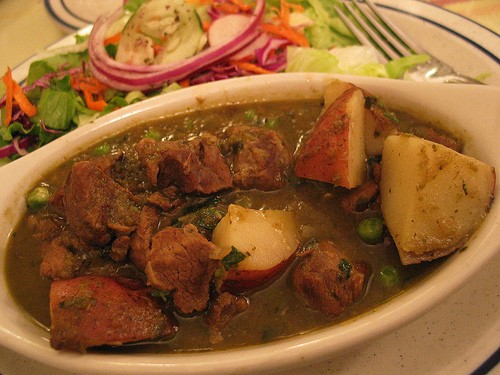
One of the most basic ways of preparing food: protein, seasonings and vegetables into a pot with some water. The result is warm, inviting and filling; perfect comfort food, no matter what continent you're on. Peruvian stews are as wide-ranging as its people, from light seafood soup to thick stews that won't run off a spoon. One thing to bear in mind is that Peruvian stews are not always the prettiest foods on earth.
Seco de cordero is the closest thing to beef stew in Peruvian cooking, except that it's made with lamb simmered in beer and an improbably amount of cilantro. Spices and chiles round out the stew, which has a slightly gamy, slightly tangy taste. The longer you simmer the lamb, the more it melds, especially left overnight: this makes perfect leftovers for lunch the next day.
Estofado de pollo is a completely non-threatening chicken stew with potatoes, garlic, onions, sweet wine and tomato paste. If you make this at home, use chicken legs so you get the chicken taste in there (breasts simply don't have much flavor to them).
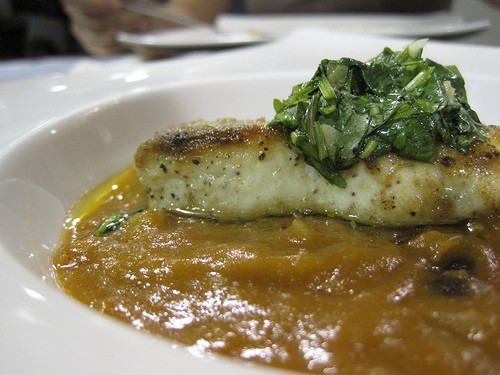
Carapulcra is possibly the worst offender in the ugly-stews category. Not to put too fine a point on it, it looks like chunky barf. Ignore the look, though–the flavor is packed into this dish like no other. Carapulcra is a thick stew of pork, chuños (naturally freeze-dried potatoes, which taste amazing), peanuts, wine, vinegar, stock, cumin and chiles.
Pescado sudado literally means “sweated fish”, and this is white fish such as halibut simmered in white wine, stock, tomatoes, chiles and lime juice. This is nearly always served with yuca, a whitish tuber like a different sweet potato (called “boniato” in Puerto Rico).[
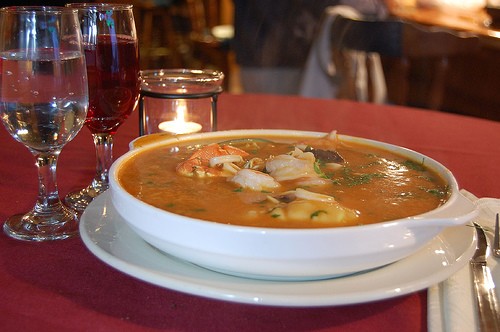
Parihuela is Peruvian cioppino, a thick soup of various kinds of seafood (shrimp, squid, clams, mussels, etc.) simmered in wine, onions, lots of garlic, chiles and a bay leaf. I'd say it looks like bouillabaisse, but I don't want the writers of the Chart de la Bouillabaisse Marseillaise to get their culottes in a twist. There's no rouille (the dark red sauce that accompanies bouillabaisse) in Peruvian cooking anyway.
Those who aren't afraid of nose-to-tail eating should order cau cau, honeycomb tripe stewed with cubed potatoes and mint (traditionally huacatay, the black basil or mint of Peru). It's actually one of the lighter stews, though liking tripe is a prerequisite (I don't).
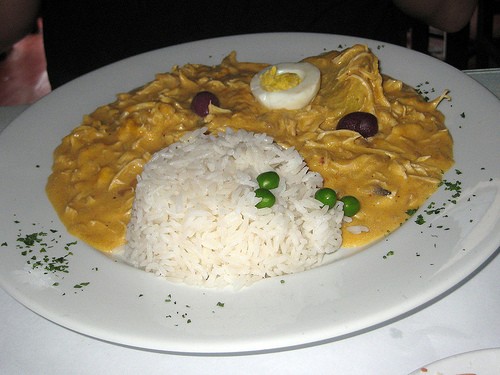
Ají de gallina might be my favorite stew. It is the perfect dish for a cold, rainy day: a thick, yellow sauce made from yellow chiles, bread, grated cheese, milk and walnuts poured over shredded chicken, a hard-boiled egg and sometimes potatoes or olives. It's always eaten with rice. Though it is a spectacularly unattractive dish, the thick gravy will get into your brain and you won't be able to stop eating it until you're practically licking the plate clean.
Where to Get It
Last week's post inspired a bunch of recommendations, the only one of which I've tried is the Edwin-approved Casa Inka (8610 Warner Ave., Fountain Valley). I was going to recommend a little hole-in-the-wall in Anaheim called Carad Dulzura, but I drove past it last week and it was gone, replaced by yet another Thai takeout place.
I can't, in good conscience, recommend places I've never tried, but please let me know if you've tried the places in last week's comments. I will say that the best version of ají de gallina I've found in OC has been at Aires del Peru, formerly known as La Pizza Grotto (13008 W. Chapman Ave., Garden Grove).
What's Next
Next week, we'll cover why Peruvian chicken is so good, a few more main dishes, some desserts and a few drinks, both alcoholic and non, that will blow your taste buds out. Have a great weekend!

